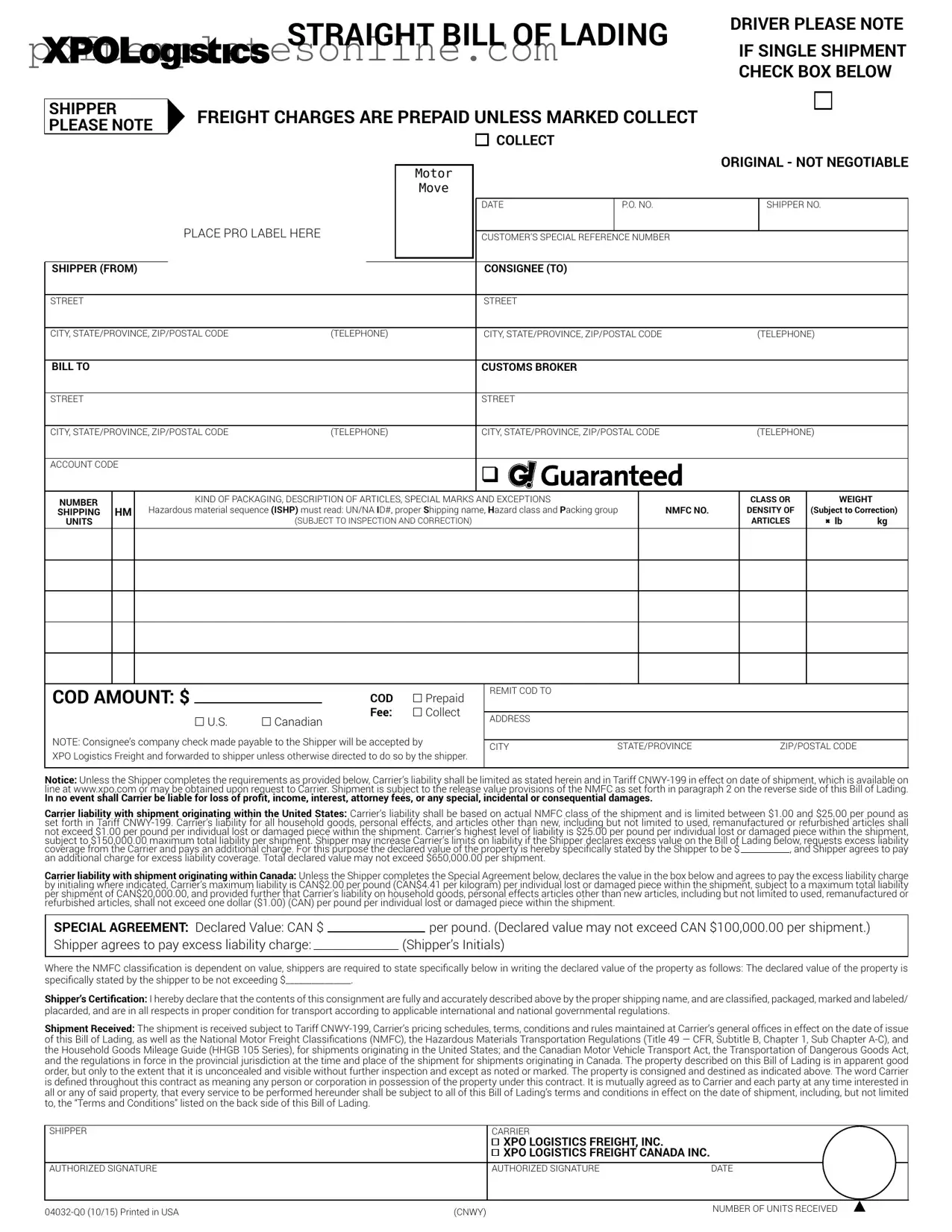Filling out the Xpo Logistics Bill of Lading form can be straightforward, but many people make common mistakes that can lead to delays or issues with their shipments. One frequent error is neglecting to check the appropriate box for single shipments. If this box is not marked correctly, it may cause confusion regarding the shipment's status.
Another common mistake is failing to accurately complete the shipper and consignee information. Missing details such as the correct street address, city, state, or postal code can result in delivery delays. Always double-check these fields to ensure that all information is complete and accurate.
Many individuals also overlook the importance of specifying the kind of packaging and the description of the articles being shipped. This information is crucial for proper handling and compliance with regulations. Incomplete or vague descriptions can lead to misclassification and potential liability issues.
Another frequent oversight involves the declaration of hazardous materials. If hazardous materials are included in the shipment, the shipper must provide the correct UN/NA ID number, proper shipping name, hazard class, and packing group. Failing to include this information can lead to serious regulatory violations and safety risks.
Shippers sometimes forget to indicate whether freight charges are prepaid or collect. This can lead to misunderstandings regarding payment responsibilities. Be sure to clearly mark the appropriate option to avoid confusion later on.
Many users also fail to declare the value of the shipment when necessary. If the declared value is not specified, the carrier's liability may be limited to the minimum amount. This could result in significant financial loss in case of damage or loss during transit.
Additionally, some individuals neglect to initial the excess liability coverage section when they declare a higher value. This step is critical if the shipper wants to ensure that the shipment is covered beyond the standard limits. Without proper initials, the carrier may not recognize the requested coverage.
Another mistake involves not signing the Bill of Lading. The shipper's authorized signature is mandatory for the document to be valid. Without this signature, the shipment may not be processed, leading to delays or complications.
Lastly, shippers often fail to keep a copy of the completed Bill of Lading for their records. Retaining a copy is essential for tracking and reference purposes. Without it, addressing any issues that may arise during transit can become challenging.
